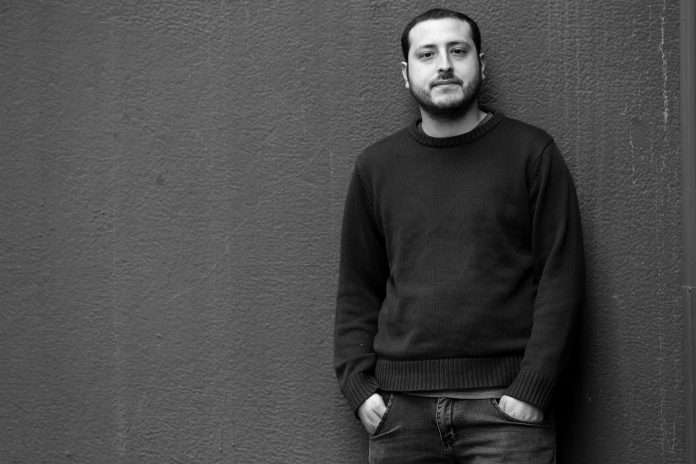This week, Gabriel Ramos took his degree exam to become a Doctor in Science, mention in Physics. Ramos held a videoconference from France, an instance where he showed his investigation work, which was successfully approved.
After performing a successful degree exam thought videoconference from France, Gabriel Ramos obtained the Doctor in Science, mention in Physics degree last week, with his thesis named “Dynamics of confined microswimmers inside a droplet: from micro activity to micromovement”.
With Rodrigo Soto and María Luisa Cordero, Director and Alternate Director respectively, of the Millennium Nucleus as tutors, Gabriel Ramos made known the results of his investigation, consisting in three experiments in which he confined bacterial suspension inside microdroplets, as he said: “to study how to extract useful work from them”. In other words, to understand how groups of thousands of inserted bacteria inside the water microdroplet, get organized to move collectively and start to move the drop in which they are inserted. In science, this is called “biological motor” and it is expected to have a huge impact on medicine, electronics, and biotechnology.
Rodrigo Soto explains the reach of Ramos’ investigation that included, not only important scientific results but, the development of new methodologies and protocols. “His work in the laboratory was fundamental for the Nucleus work. He was the first student performing experiments with bacteria in the laboratory and, to accomplish that, he developed methodologies and protocols that lay the foundations for the work of current and future students. On one hand, today we have five people experimenting in the laboratory thanks to his work, and, on the other hand, his thesis was extraordinary. He achieved to measure and characterized two configurations of how bacteria get organized and become able to move objects larger than them, giving rise to what we call a motor of motors”, Soto says.
Doctor Ramos thanked the working environment and the solidity of the Millennium Nucleus team. “María Luisa Cordero and Rodrigo Soto were always considerate and available during the thesis. There was always space to explore and I was able to try different ideas in the laboratory. I feel grateful because the Nucleus gave me a very good level formation and I am happy about the investigation we made”, says Ramos, from France.
His immediate plans are working in an investigation abroad and he already gave his first step for it: he is currently working at the Fluids Mechanics Institute in Toulouse, France, where he obtained a post-doctoral place for two years with the possibility of a renewable year in the context of one of the ERC Projects (European Research Council) named BEBOP and headed by Yohan Davit. “I will work on the formation of biofilms in pore networks, studying the properties of the flows in the network as the bacteria colonize and block the channels”, Gabriel says.
Overview of the three experiments
First experiment: Escherichia coli suspension was confined in droplets with an emulsion of water and oil, creating a drop propelled by bacteria.
They showed drops conduct a persistent random movement, with persistent time τ ∼ 0.3 s, long time diffusion coefficient D ∼ 0.5 μm2/s, and an average instantaneous velocity V ∼ 1.5 μm/s to the maximum bacterial concentration studied.
They vary the drop radius and the bacterial concentration, showing the persistent time, diffusion coefficient, and average velocity increase the bacterial concentration regardless of the size of the droplet.
Lastly, they demonstrate that the average velocity of bacteria at the bottom of the drop, which is separated from the glass substrate by a thin layer of oil, is antiparallel to the instant velocity of the droplet. This suggests the displacement mechanism is a rotation with a slide of the drop on the substrate caused by the collective movement of bacteria. The results show microscopic organisms can transfer useful mechanical energy to their surroundings, opening a possibility to generate mesoscopic motors composed by microswimmers.
Second experiment: They showed, by the application of a constant magnetic field, magnetotactic bacteria, confined in an emulsion made of water and oil, got self-assembled forming a rotating motor which exerts a torque on the external oil layer. Inside of the drop, a collective movement forms a large-scale vortex with perpendicular vorticity to the magnetic field, this means, is reversible by inverting the magnetic field.
They studied this collective movement in different bacteria concentrations, magnetic fields, and droplet radius revealing the formation of two areas near the interface that generates torques. They also quantitatively characterized the removable mechanical force of this new self-assembled biological motor.
Third experiment: Finally, they studied an Escherichia coli bacterial suspension confined in a double emulsion where a drop of oil got trapped inside a drop of water and oil. They showed the inner oil drop make a persistent random movement in the horizontal plane with a persistent time of τ ∼ 0.3 s. The diffusion coefficient in the horizontal plane depends inversely on the radius of the external drop so, they compared it with the thermal diffusion coefficient. With this information, they calculated the active temperature, obtaining as a result 2.7×104K, two orders of magnitude higher than the environmental temperature, consistent with the bacteria-propelled drop experiment and other previous works. They also studied the vertical plane showing the diffusion coefficient on this plane is less than the horizontal plane due to the geometric entrapment.


